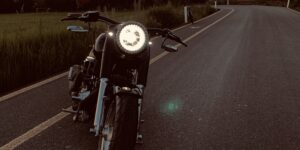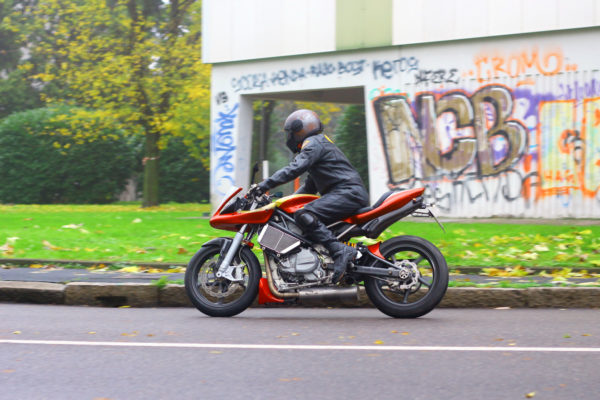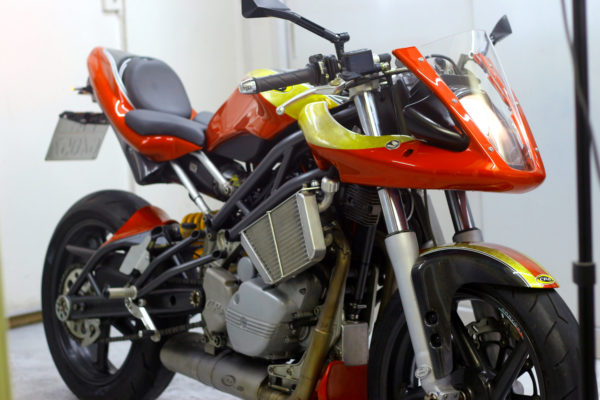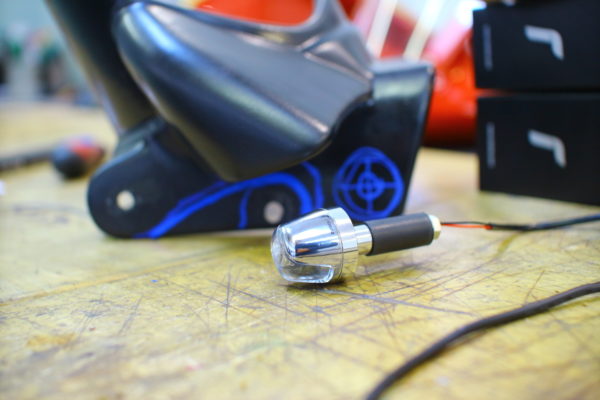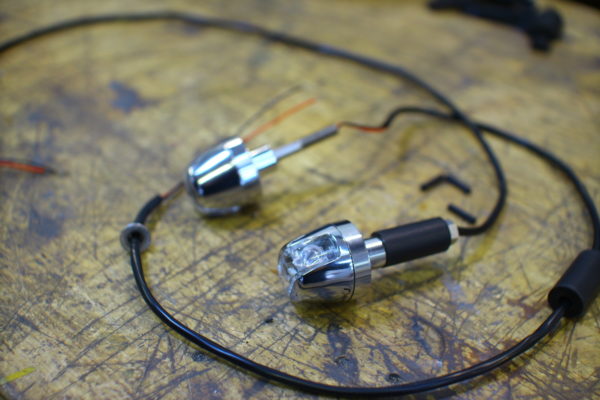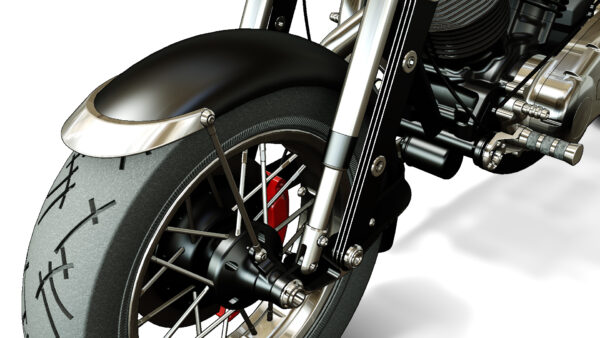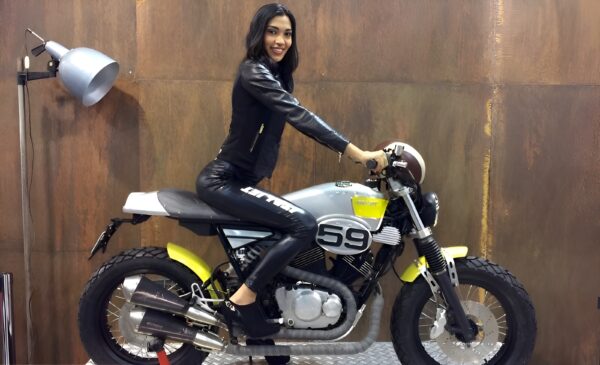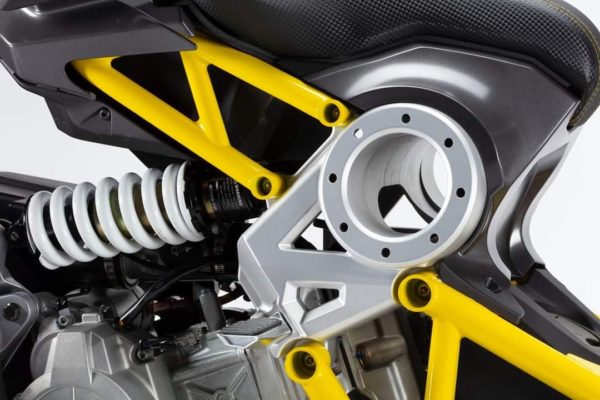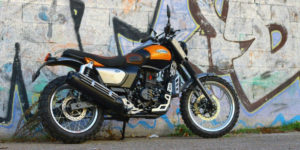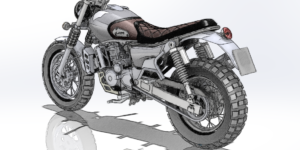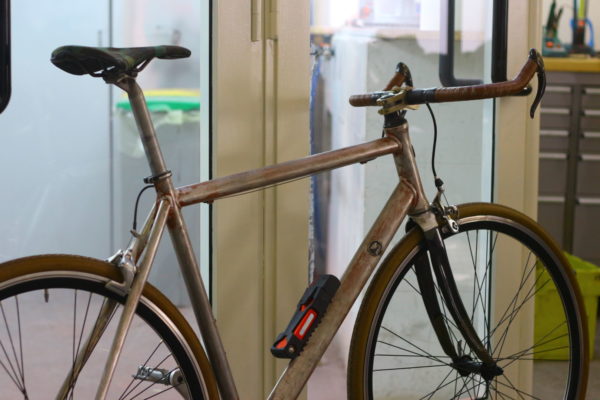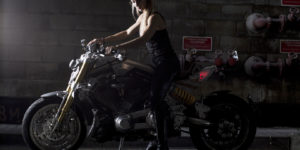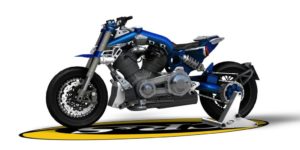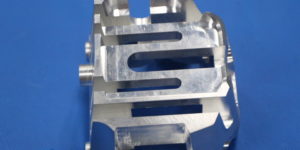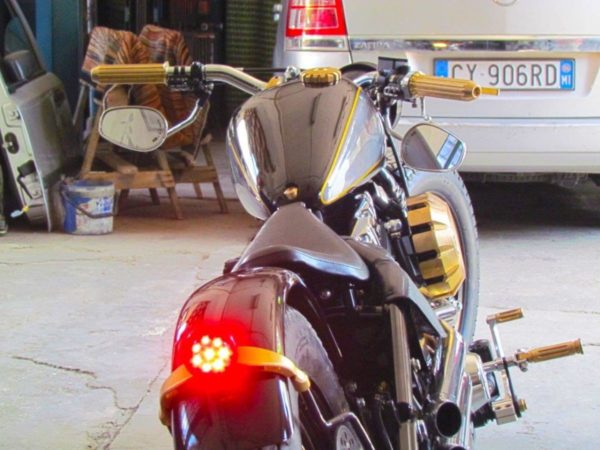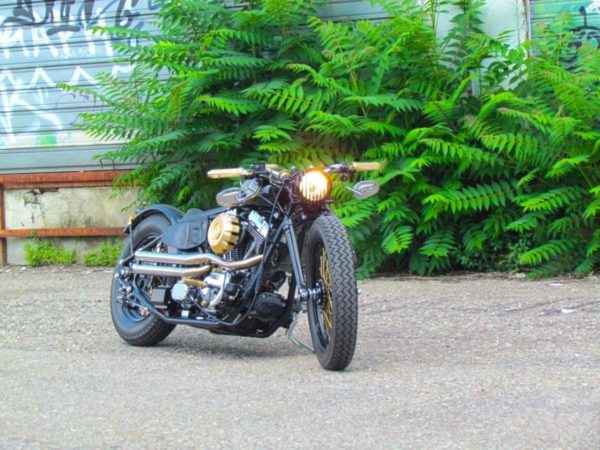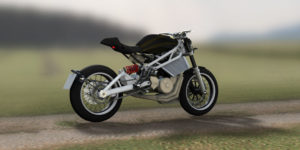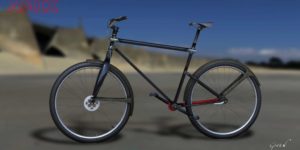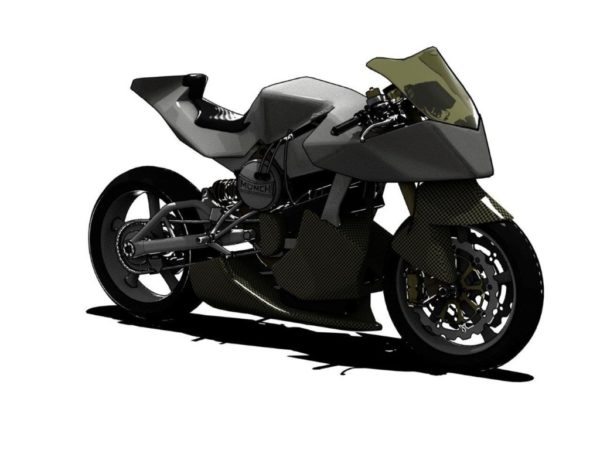PROTOTIPI
Harley Davidson Heritage Softail Restomod
Harley Davidson Heritage Softail Restomod
The Harley Davidson Heritage Softail Restomod is one of those bikes that once finished you would never want to let go.
You fell in love with it during development because everything went as planned, or only at the end after countless problems, or just finished developing a detail ...
One of the ones you would like to use to keep, which maybe you are jealous or particularly proud of.
Well, projects like this don't happen often, however good one can be, there are those that are better and those that are worse.
HDHSR is one of the better ones. In every sense, for those who made it, for those who ride it and for the bike itself, now more modern, more technological, more fascinating, but always with the same huge class, always with its depth.
CR&S OF “Sporty”

CR & S OF "Sporty"
The "Sports" is beautiful because it is the result of a great collaboration 4 hands.
The design is of John Van Houten owner, we have it translated into reality following a marching its main sketch and a series of feedback during construction.
the CR&S VUN is a bike that we know very well, we have much experience on this bike, it was so easy to interfere. Also the VUN is a bike already beautiful in every component, the only parts that we were not convinced they are right and the tail fairing, so it was nice to work to try to bring this beautiful project 2005 nowadays.
Computer Aided Design
The bike has been made possible thanks to the "traditional" CNC techniques, laser cut, etc, but above all thanks to 3D printing. The hull has been specifically designed to be printed, As a result of its shape it has been optimized in order to exploit the ability of 3D printers to produce the core of the piece with a calibrated reticle type Honeycomb, this allows to have a self-supporting structure, Lightweight and robust.
At the same time this technology optimizes print times, allowing us to create the entire hull with "sun" 60 Printing hours.
Windscreen and Plexiglass
The windshield as usual included a part in plexiglass, for the user's convenience we have achieved this by using a component part in trade (source HONDA CBR1000RR), scanning the workpiece in 3D modeling and the bodywork part around the plexiglass, so you can find and quite simply replaced anywhere in the world.
Body Work
The painting, graphics and color and trim are definitely a very important part of the project.
A fantastic job has been the result of a beautiful, yet another collaboration with KAOS Design.
RIZOMA, a story within a story.
For the part of lighting and accessories that could not aim for the best for a similar project, from this need was born the opportunity to work with the great guys of RIZOMA as a world top in terms of quality of manufactured components, as well as the original supplier of the billet components of the CR&S OF original. The beautiful plates in CNC frame have thus found alongside their origins to latest LED elements such as arrows with integrated position light RIZOMA LIGHT S and arrows handlebar LOOK.
The combination of these elements has given birth to the rear light assembly is secure racing license plate light effect cantilevered and functionality.
Sponsors and partners of the project:
Matchless Model X reloaded

Matchless Model X reloaded
The "Matchless Model X reloaded" it is a motorbike that recalls the style and charm of a classic Matchless model, the Model 1929, but with a touch of modernity and innovation. The motorcycle has a V-twin engine 1916 cc, derived from an S engine&Yes but customized by Matchless, which develops more than 96 CV. The motorcycle stands out for its unique design and cutting-edge technical solutions, like type front forks "Castle", rear traction suspension with shock absorbers positioned under the engine, the semi-lamellar frame with integrated oil tank, the brakes deactivated a 12 pistons at the front and rear 6 at the rear, and Matchless-branded engine heads. The reloaded Model X was shown for the first time at the EICMA Milan motorcycle show 2015, and is the result of the passion of the Italian entrepreneur Franco Malenotti, which purchased the Matchless brand in 2012. The project obtained the consent of the Collier family, founder of Matchless in 1899, who praised the combination of tradition, technology and elegance that distinguishes the motorbike. The reloaded Model X is a concept motorcycle that could become a reality in the future, since the house has already filed 12 patents for its solutions.
CR&S DUU
CR&S DUU
The leads it's a motorcycle produced by CR&S from 2011.
The prototype was presented at 'EICMA of the 2009. It was designed and built by Roberto Crepaldi in collaboration with Donato Cannatello for design and Beppe Bulla for the chassis and mechanics. The DUU is powered by the X-Wedge of American S&S, and the whole project revolves around it. The engine is a 1.917 American extraction cc, its architecture is reminiscent of the twins Harley Davidson, but its design is completely modern. It is the second model of the house, and as such, its name means "due" in Milanese dialect.
The Duu born around this engine and then geometry is then focused on: high engine, wheelbase compact, swingarm the longest possible and angle of inclination steerer content, this leads to excellent handling but good stability at high speeds.
Italjet Caffeine 250

Italjet Caffeine 250
The Italjet Caffeina motorcycle 250 it is a café racer with vintage charm, which was presented in 2018 from the Italian motorcycle manufacturer Italjet. It is a motorcycle that falls into the world of small displacements, but which offers quality components and an original and captivating design. The motorcycle is powered by a 60° V-twin engine 250 cc, air cooled, with electronic injection and Euro approved 4. The engine delivers a power of 17,7 CV a 8.000 rpm and a pair of 19 Nm a 6.000 giri/min. The bike has a dry weight of 128,5 kg and a tank capacity of 14 LITER. The motorcycle is equipped with an upside down fork, of lobed disc brakes from 280 e 240 mm with ABS and tyres 110/80-17 to the front and from 130/70-17 O 15 at the rear, depending on the version. The motorbike is available in two versions, which differ in aesthetics, the headlights and the size of the rear wheel: the version with wheel 17 inches has a saddle height of 820 mm and a sportier look, while the version with wheel 15 inches has a saddle height of 780 mm and a more feminine look. The motorcycle was launched on the market in 2019, in two colours: black with burgundy or silver/yellow leather trim.
italjet Dragster

Italjet DRAGSTER 2020 edition
A revised Icon!
The Italjet Dragster is one of those icons of the 80/90 that will remain forever in the memory of our relegated exclusively to the 'desire'. We probably dreamed more of Kim Basinger , perhaps because both inspired desire to despoil, to see if the covered was as beautiful as I discovered ...
Being able to work on such an icon of our youth was thus an immense honor, pleasure and responsibility for us.
Clear ideas...
Italjet had very clear ideas of how it should be their flagship scooter in the new millennium, But these ideas were translated into reality or better in math 3D.
We then made some versions in 3D then passed to a digital maquette then merged into the product that it was possible to admire the motorcycle show EICMA 2018.
CR&S DUU “REDSHIFT”
In the aim of research!
The GIVEN REDSHIFT is the natural evolution of the note CR&S DUU, motorcycle exclusively produced in small circulation by the motorcycle manufacturer meneghina with artisan mold.
When in 2013 duu the project was interrupted by ill-feeling interior to CR&S, its Lead designer Donato Cannatello, After a brief stint in Matchless, He decided to open his own design center, and to carry forward the project duu, now orphaned of its creators, however, using the cooperation and approval of the original founders of the exclusive motorcycle, as well as of the operational manpower, thanks to the unchanged esteem and friendship.
The original bike has been developed according to those who were certain stylistic standards identified at the time as a natural evolution of the model "Biotta" ("Naked" ed) on occasion presented by the company.
The redesign has obviously focused on new rock steady front end, replacing the original inverted fork with an innovative system to the central cushion and lateral sliding sheaths. Laprogettazione the new front end is born to the computer, creating all the components by means of three-dimensional modeling and analysis FEM , which it has also allowed us to analyze every single part through the control of the forces to which it is subjected.
The components have been realized by means of CNC removal technology (Numerical Control
computerized) with billet milling.
The design (or rather the realization) of different copper components is the quid which gave the chromatic and handicraft character to the motorcycle.
Starting from the original forms of car body parts, through traditional typing technology based on pitch, They have taken shape some elements that bring with themselves the manual work of skilled craftsmen certosini of the noble metal.
The REDSHIFT is still a motorcycle every day, not only by performance.
One of the main components that meet this idea is the new passenger seat / tail that has a double meaning, on one side, "Cover car" with a base made of aluminum billet which creates a visual continuity with the geometry of the tail / tank, while simply turning it turns out the padded saddle to accommodate the passenger if necessary.
The project name "Redshift", the phenomenon by which the light emitted by an astral object has a wavelength greater size than the one he had in emission, shiftando its color to red, It symbolizes the evolution of duu, from small motorbikes to only bike series evolved.
REDSHIFT IL:
- The red shift is the phenomenon by which light emitted from an object has a longer wavelength than that which had in emission.
This means that the color turns to red. - The most important is the REDSHIFT in cosmology, due to the expansion of the universe. The stars in particular show a redshift corresponding to the speed with which increases their distance from the earth.
- Copper is used on our duu its displacement from the original duu, aging will change its color, assuming the chromatic variations that the material will take.

ITALIAN MOTORCYCLE CONTEST
"BEST OF SHOW 2018"
Our CARRIES "Redshift" He won the award "BEST OF SHOW" the national contest IMC , clashing with other bikes beautiful and of the highest level.
This obviously fills us with pride and motivates us to do even better.
Piaggio MP3 “Stream”
The Piaggio MP3 according GIVEN!
Technological, functional and subversive.
Turn the scooter concept: The time is now right for a restyling of the classic scooter understood as covered by a beautiful mechanical ugly plastic form, the market is ready for a fresh look at modern urban commuter. There is a strong need for a means that allows us comfortable daily commute with ease, reliability and comfort. But today scooter "mature", one who seeks a reliable and usable product, but also to enable him to be noticed and you transfer to others their experience and passion motorcycle, He is willing to give up something in terms of comfort just to have a medium that characterizes it and identify, but also and above all that fun, that enthusiasm!
We want to create an object that collects in unless the benefits of all motorcycle worlds, but the feelings, the drives, the typical attractions of all worlds, confluendole in a project by the easy industrialization and commercialization.
.1 Performance: The engine becomes the beating heart, the coordinating element, the base, unnecessarily sound but efficiently perfect. A modern 300cc engine is the perfect balance between lightness and performances as, but in this case it is necessary a larger displacement engine (500~800cc) that transmits good vibes like a motorcycle.
.2 Timeless: Always the oxymoronic combination-form vs. function has gripped designers, in this eternal dualism only one thing is certain, the function is eternal, the shape aging. Our vision is closely linked to the function of the particular, to its mechanical topical.
.3 Charm: The appeal in this case is a child who looks a the washing machine spin. A daily necessity, a routine ritual that despite its visual vanity fails to enchant for its kaleidoscopic tour of colors and details.
.4 Mechanics: The refined mechanics, made of functional components but also beautiful, not too industrial, well made and designed to be seen and appreciated, to intrigue and attract.

The Stream is our proposal for the future style for MP3 family. And 'his natural variation in key 2020, It is still a scooter, but its details are supernaked. It 'a project with down to earth exploring paths that other motorcycle manufacturers have left unexplored for now, It means the scooter as a means of makeshift motorcycle but as an evolution of the classic motorcycle.
Our proposal provides various ways of defining, from the static mock-up to a working prototype and production characteristics with concrete. E 'equipped with the top of the current range regarding mechanical and motoring. Its innovative contribution concerns the non-mechanical style.
UM RENEGADE SCRAMBLER 300W
The UM RENEGADE SCRAMBLER 300W is a prototype (showbike) created for UM Global on the basis of their product currently on the market, the RENEGADE COMMANDO.
Of the original motion of course we had to keep as many parts as possible to optimize the entire engineering process and put into production, we also have reused some of actual production parts UM so consertire company an advantageous economy of scale.
The main change has obviously affected the new wheel sizes ( 120/70 R19 Ant. e 170/60 R17 Post.) we had to use to give the bike a new enduro trim, We then re-radiated existing hubs with a new set of Takasago Excel and mounted the panciutissimi and tassellatissimi Continental TKC 80.
Similarly we had to intervene to lift the bike on set, then the back we opted for a couple of shock absorbers 380mm, while the fork has remained the series to limit investment.
For superstructures we drew with pleasure by those who are the componentistic serial production UM, always at the highest level considered to be the end of the market, mixing classical elements with more modern parts, and in some cases "disruptive" as the underride protection in 4mm sheet made with our technique "Sheet-Box". We also experienced a first in the motorcycle field, namely the creation of wooden components made from 3D design through numerically controlled milling (CNC), and made of "cheeks" tank with a perfect shape bearing on the surfaces of the original tank and some details in the rear area.
The rest of the parts are made in 3D printing but also by local artisans, the beautiful leather upholstery is an example, but also the sheet metal mudguards do not joke.
The bike was presented at EICMA motorcycle show in Milan 2018 and according to many is one of the most exciting features that are seen.
Given “VRS02” Réfola
"La Rèfola is a short breath that disappears even before becoming aware of itself "
The only exception to our small bikes are bicycles .... The VRS02 is a bike we made for fun and for internal needs. He liked the idea of having a fast and agile bicycle, set and stylish.
We have discarded the fixed gear but we kept the stylistic line of the bike with this type of transmission. All stuffed and accompanied by high-level components and look urban fight!
The VRS02 is the evolution of VRS01, bike which results, we have created a new finish for the aluminum frame, scraped to bring it to the naked and then giving of amaranth color traces "Rust", a typical example of our technique finish "Unpaint".
The mechanism is unchanged in its simplicity and functionality, location racing, good brakes, freewheel, ma look da "fixed gear", wide tires to copy pave urban well.
CR&S DUU “Nd01”
 The CR&S DUU It is a bike that we know very well, we have collaborated in the development directly in CR&S following the style and engineering from the beginning up to direct customizations for the most demanding customers.
The CR&S DUU It is a bike that we know very well, we have collaborated in the development directly in CR&S following the style and engineering from the beginning up to direct customizations for the most demanding customers.
Now we have created a version, showcase of our design capabilities, where we could fully express our ideas about motorcycle-style and where to apply the most of the criteria that have always accompanied us: functionality, aesthetics, attention to detail and aversion to the paint and covers all futile.
Our CR&S duu has obviously been the subject of a deep customization mainly due to the fact that the model from which it derives, the CR&S DUU "Biotta", born as version "naked" CR&S DUU original. Due to incomplete development of the initial project in CR&S, however, the bike has been "denúdala" (Biotta n.d.r.) only the front, leaving a strange mix of naked front (even too much) and the rear that instead still had parts in traditional plastic bodywork ... Too rough for a bike of this caliber!
We then tried to rebalance the style between the front and rear, slightly overlapping onto the first and the second stripping.
In Given we then shaped duu in CAD first and then in aluminum, almost everything Aluminum, almost everything to CAD.
Some parts have preferred her hand on the spur of the moment (it is always fair to leave a part of the work to the heart), but mostly the bike has been entirely designed, displayed and then made, all with a work-flow that now characterizes us and sees us among the the technical pioneers.
The bike has been the result of a lot of work, in general our approach to projects always involves a preliminary phase of 2D concept which we submit to the client (be it business or private), where we try to make clear all the points that will be subjected to interventions and mainly try to identify immediately the two most important parameters: Volumes and style.
Once this is done we proceed with the project definition, developing it with the use of computers, but also the pencil or directly mechanical workshop.
All pieces designed by CAD systems have been realized in CNC machined from aluminum parts or plexiglass or ABS and other materials. With our expertise in project area we designed from scratch the rear light assembly is a self-illuminating frieze that recalls our logo without being too obvious.
CR&S OF “CEFEIDE”
A Cepheid is a young giant star that pulsates regularly changing its brightness in a regular cycle stremamente.
Their high brightness makes Cepheid stars the standard parameter to measure the distance of globular clusters and galaxies.
Our VUN as Cepheid is a reference in the motorcycle world for its timelessness and unparalleled.
An exercise in exquisite elegance motorcycle. the CR&S VUN is a special and exclusive motorcycle, hand-built by a small Milan renowned motorcycle manufacturer in the world for his creations exclusive and refined performance. Built in only 50 specimens, mounting a frame assembly trellis Mixed steel tubes with aluminum plates 7075 milled from solid atelier Rhizome. The standard suspension offer high performance while remaining linked to a traditional constructive schema. The front fork, realized by Paioli, It is the only one of its class to have a traditional configuration combined with a considerable diameter and radial attachment of the front caliper for single disc. The rear shock absorber instead is mounted in a horizontal position above the wheel with direct attack, very stiff and sporty. The engine is a Rotax 652cc single-cylinder that offers so much torque and 54 horses tree.
Everything has voted to keep the weight and then exaggerate the pleasure and driving precision. In this sense, the superstructures are minimized and realized with the most noble materials such as hand-wrought aluminum for the tank and carbon for automotive body parts.
Come ex-Lead designer in CR&S, no other, better Donato Cannatello and its present motorcycle engineering teams GIVEN, They could work on the reconstruction of a motorcycle so important and exclusive.
Work on VUN saw a complete reconstruction "frame-off", where the bike was broken up in every piece to remove the original paint of the chassis and the engine and go to work with abundance on the swingarm and the important details but hidden. For this purpose all machined and finished parts have been treated with procedures as natural as possible so as to preserve the mechanical characteristics of each piece, then the frame has been wet with a very light coating of nickel that will protect the surface from oxidation while the aluminum parts were hand-brushed so as to leave exposed the noble material.
The rebuilding process has affected many small details of the bike, some redesigned and reconstructed using the CAD for steel CNC techniques, aluminum and ABS, but also with more 3D printing techniques for plastic parts.
All changes are aimed at maintaining the excellent details and functionality of this already fantastic bike, its engine, its performances and the high specialization of the construction method. The engine and the intake system have remained substantially the same to preserve the constructive and above all homologation characteristics. In this way the "body-kit" It can be universally used on similar motion.
A lot of effort was put into updating the swingarm instead, mounting a double arm in die-cast aluminum, bolted with a central plate that has reported the geometric characteristics of the original quota, thus allowing to preserve the excellent chassis of the bike.
For a bike so special we opted for an intervention "aggiornativo" keeping the important characteristics and improving those in CR&S could not care for reasons of cost to the public.
The result is a highly recognizable bike but with a strong personality and elegance, which preserves both performance and exclusivity that possibility of daily use. We love it.
Samurai Chopper

When I see our Samurai fell silent ...
Low , long, narrow and black so that you are afraid to drive and desire to tame it.
At first glance the Samurai Chopper seems a gate with wheels van, a micro tank and that mass of cylinders that and carteroni, then you stop on the locomotive brakes and the controls on the micro-switch and start goggle ... Slowly begin to scroll jumping from one detail to another, from one contrast, Suspended from other. The alternation between the black, chromium and brass is hypnotic like a pinball full bonus ball.
Do you dwell on the arms of beautiful billet aluminum hidden by paint and hidden from real steel exhaust pipe straight from 2 mere inches.
See amazing suspension and fluffy but do not see a shadow of a damper. See strange nuts used only in remote constellations pulling logs ties with Uni-Ball joints micrometric regulating preload nulla.Poi see the painting and start to get into all the black levels that can fit in such a small tank.
And chromium, the springs of Springer, chiatto the handlebar and straight and catenone as a bridge on the Thames.
Then you jump on and parts and you are the happiest man on earth.
A Renegade Tracker 300
For UM Global we made a small Scrambler and a small miracle.
Just a week after the International Trade Fair of Milan EICMA motorcycle, We receive a parcel with a series of pieces and a pair of frames to be joined, in essence it came to making a motorcycle by two, from a front end, the other engine, superstructures from a reservoir and the other.
The result speaks for itself, with only three days of intense sessions TIG welding, We rebuilt from scratch frame and adapted all the pieces of mechanical and superstructures. A number of details have been created using 3D printing or manually through mill /.
The bike is a perfect incarnation of a modern urban scrambler, light (300cc engine 4 Rates water), small wheels, extremely fun and easy to handle.
The bike has been a great success at the recent International Exhibition of Milan EICMA motorcycle 2015, UM approaching the style to what are the demands of the new (for them) European market.
Record Motor Cycles c1
RECORD MOTOR CYCLES c1

Unveiled at the EICMA 2015, al Dainese D-Store, the 18 November 2015 The concept Record Motor Cycles C1 is the preview of a new ambitious project of Roberto Crepaldi.
The model designed and manufactured by GIVEN design with the technical participation of In-Motion has seen us involved throughout the part of the transformation from the sketch to the final model style, through modeling Hull, 3D scanning pilot, and the reconstruction of the same pilot pattern. All once a more 'perfect integration of the pilot's silhouette with the hull, This respecting and observing the limits imposed by the FIA regulations.
For more information, visit RECORDMOTORCYCLES.COM
In these images you can see the construction phases of the model and the frame needed to scan the real pilot in 3D.
The hull of the processing steps and the frame before painting.
The finished bike in our workshop.
Some pictures of the preparation and presentation of the model.
A "small" depth technical sull'aereodinamica result of Riccardo Capacchione RMC:
THE CASING AND AERODYNAMICS
The most visible component of our bikes Speed Record is definitely the fairing. Also called "hull", It performs a dual function: of course aesthetic and functional aerodynamic efficiency. The aesthetic component is the subject of the designer but is not limited, as you might think, to trace "sexy" lines capable of satisfying the likely customers. Roberto Crepaldi, the creator of Project Recordmotorcycles, He drew the first sketches of style with the classic white of the paper and charcoal system. These were then processed digitally by our Donato Cannatello, a specialist in this area (www.given.it), to be edited and revised quickly. Donato has also carried out a 3D scanning of the entire motorcycle-pilot system for performing a dimensional analysis and performance of the aerodynamic flows and further has made "solid" prints 3 Dimensions of each considered critical component of the overall design economy, Also to achieve the "tactile" made of partly drawn to CAD.
The opposite of Flight
As we said, the fairing design must take into account the very important function performed by this "cover" that wraps the bike. We refer to the aerodynamic efficiency, since the profile of the bike is nothing but an airfoil upside down ... (see Glossary, At bottom). The front fender is considered an integral part of the fairing as, excluding the tire, is the component responsible to "open" the air during the race.
The fluid in which the motorcycle moves, prosaically said "air", It opposes the motion of the ... motion, and this resistance increases with the square of the speed: if we double the speed, the Fr-resistant aerodynamic force will increase by four times and so on, exponentially. Try putting a hand out the window of a speeding car, a 130 km / h. The push on the palm is already significant, now imagine a 450 km / h or so what is the magnitude of the forces with which he has to do.
The fender then "open" the air stream, funneling it on the sides of the fairing and the fairing. The particular form of our "fender" also generates a downward thrust, detta "deportanza" (downforce), which compresses the tire on the road surface, avoiding that the motion raises the muzzle, just when our driver would not like. This is a force directly applied on the wheel, given that the mudguard is fixed to the fork portion "resting" on the ground and is therefore particularly effective. The same function is performed by fairing, however, that "pushes" on the motorcycle portion which is located "above" the suspensions of this and our designer, l’Ing. Giulio Bernardelle, must consider (It took account ...) in the calculation of the fork springs, calls to support the maximum speed a much higher load than that measurable in motion stops. The downforce generated by the fairing will therefore have a lower real effect than that of the front fender but being much greater exposed surface, the thrust will still be considerable.
The importance of harmonious hips
The fairing receives the airflow coming from the fender on the flanks duly connected. Their shape prevents the airflow moves in a disorderly manner and protects, as does the fairing for the upper portion, the pilot. Boots, legs, arms, helmet, shoulders, so they are "under" the powerful air stream and not create unpredictable eddies, which may disturb the stability of the bike. In fact, the air flowing in direct contact with the surfaces of the fairing moves whirling motion creating a layer - as thin as possible - where the vortices chase, slipping towards the rear part of the bike. . Above this "boundary layer", If the casing is well designed, the air is moving in a much more orderly, said "laminar flow", which greatly improves the aerodynamic efficiency of the bike. It is a very important aspect and is one of the compromises in the design has been forced to accept. Not being able to completely reduce the flow of air in "laminar" trying to minimize the swirling and the reason is all right: to generate vortices is necessary to draw energy from somewhere (think about the hurricanes that feed the sea warmth and vanish when this is absent), and the only available energy is produced by our V8 engine. This means that a part (remarkable) Power is spending "to run the air" and not to accelerate the bike. Also vortices which undermines stability, in addition to being a little effect pleasing to the pilot at least as much as the surge described above, It is another way to subtract energy to the motor.
The sides saran beautiful, but the tail ...
Apart from the sides of the hull pigtail "closes" the airflow in which the motorcycle moves, so as not to generate vortices in the rear portion. As repeated far, the turbulence slows the bike, in this case as if there was a "giant hand" pulling back the vehicle. Our tail is very high, but we would have drawn even higher to achieve maximum efficiency. There are limits, however,, imposed by Regulation, I precisi. The tail can not be higher (measuring from the ground) than twice the radius of the wheel. The form that would be expected for the part of the pigtail terminal is the "drop", a curved profile that closes the silhouette, filleting forms according smooth lines. Well, this solution would benefit if the length of the entire motorcycle silhouette was at least seven times greater than the midship section. A moment, we explain.
The "main section" is the largest detected surface on a plane perpendicular to the longitudinal axis of the bike. Still too "messy" explanation? Think then of "slicing" the bike, as you would with a gigantic mortadella. The, him, "Largest slice" represents the midship section and given that, unlike ... mortadella, this slice will not be a perfect circle, we must consider the two perimeter points most distant from each other. This is the portion to be used to calculate the minimum length of the motorcycle in the case you want to realize the so-called "drop".
Proceeding with this method the total length would be far superior to eight meters, impractical for a long series of reasons. Just to name one, think of the pair of right yaw which would cause a lateral gust of wind ...
If it does not work, better to "cut off" ...
The best way is to "cut" in a clear way the outline of the motorcycle, thus obtaining the "truncated tail". You notto that all cars have not a drop of back design, but ending with a sharp vertical line? Now you know why.
Finally, the truncated tail also has its limits and aerodynamic vortices behind it are created and how, because the area just behind the motorcycle is of low atmospheric pressure. The air is "sucked" in its interior on each side in whirling motions that are a real aerodynamic brake. That's why our tailpipes "blow" in this area, coming out from the back of the tail: increasing the pressure in this area thanks to the hot gases coming from the engine, limit of a lot of the harmful effect of the vortices. If at this point you have not wondered what it is that element placed under the hull in front of the rear wheel, We will we say: it is a component that contains the engine cooling radiators. Harness the high pressure zone located anteriorly and that of low pressure immediately behind the "container". The pressure difference is thus exploited to accelerate the flow of air that is as easy to "pass" the sockets on the front element and which convey the aerodynamic jet inside, right where the radiators are arranged. The low pressure portion that is created just behind the conveyor, sucks the air contained within, helping to create a powerful airflow that cools the refrigerant flowing into the radiators. When we want, we are just brilliant, vero?
Finally, a short glossary "aerodynamic":
DRAG: is the ability to "dig" (referring to the English verb) the air, opening a "pass" for the bike.
CX: it is a coefficient calculated which represents the aerodynamic penetration capacity of a vehicle. In its calculation it is taken into account also the "Drag".
BOUNDARY LAYER: It is the surface which divides the air layer in swirling and then uncontrolled movement, one in which the fluid (the air) moves in an orderly manner, as if it were composed of "blades", just.
DEPORTANZA: It is the strength of the vertical direction with respect to the ground, generated due to the difference in pressure between two surfaces. In the aircraft the airfoil generates an identical strength, but contrary, lift. Given that the wing is at the top and flat curve in the lower part, the air must accelerate along the upper surface to rejoin at the end of the wing with the part of the stream that flows over the flat face. For the Bernoulli, a vacuum is created in the upper part of the wing and a "pressure" then at the bottom. This pushes the plane upwards. In a motorcycle (self) it exploits the same principle, but on the contrary, to keep the vehicle close to the ground.
Given the sophisticated technologies used for the design and construction of every detail of the bike, It updated with the upgrade of colors, Also they have supplanted the classic white black and w. Seriously, pencil between the hands and the sheet of paper are a reference material almost indispensable for many designers. Ub point of transition between the union and bolder thinking, the real world and finally the confrontation with the technology available (and costs), the inflexible entity that borders within finite boundaries immateriality of creative thinking. in conclusion, the sketch makes visible the idea and allows the engineer to understand which are the most suitable for the project and feasibility of new solutions or technologies, more often, proposed again in new forms and combinations.
The design of a fairing actually starts from the front wing. This applies to all bikes and especially for our, because the speeds involved during the "Speed Attack" will be far superior to those reached definitely from any street bike but also by a MotoGP. During the launch at the maximum speed, we face a real "air wall": the aerodynamic resistance in a fluid (the air, in other words) It increases with the square of the speed. To be clear, traveling at 10 km / h the air generates a date Fr force that opposes the motion of the bike .... If the passassimo 20 km / h, resistant aerodynamic force becomes four times that measured in 10 km / h. Going to 40 km / h, Fr corresponds to the 16 Fr times the detectable 10 km/(h, etc.. A 450 km / h, imagine the intensity of the aerodynamic force that "push" on the face of our bike!
Try putting a hand out the window of a car at a speed 100 km / h (or so) and you have the perception of aerodynamic lift to a certainly not very high speed. While you're at, try to orient the palm, by exposing it to air and then completely turning his hand and will verify how the strength changes by changing the exposed surface of the hand.
To understand the crucial role of the different components of the fairing or better, of our bike superstructures, imagine being on the saddle and cross a vertical plane in space. Just after the front tire (if it says "lo", vero, but it is horrible to read and hear ...) reaches over 400 km / h the fender, whose design contributes to move towards the outer sides and upward the air molecules. The boost aerodynamics, in addition to brake the advancement of motion, pushes down the fender that, It is constrained to the fork, It maintains contact between rubber and soil. The fairing performs a similar function, "Opening" the air stream in a more coherent and less turbulent as possible. It, too, thanks to its shape generates a force directed at 90 ° with respect to the ground but, It is constrained to the upper part of the bike which is not in direct contact with the ground (unsprung mass), the thrust that if it draws acts on compressing suspensions and this must be taken into account in the moment in which our engineer will decide the "k", the elastic constant (or hardness, you do..) of the fork springs.

CR&S VuneMes
A less classic cut, more disruptive for the small home CR&S.
Redesigned superstructures, with a greater tendency to minimalism. Forms more stunted, made to measure for the customer, both for the anthropomorphic measures for the stylistic taste.
Compared to the original the VuneMES was mechanically iperrifinita, It was already perfect , It was then adopted the top of the range for the cycling components we have replaced, but in the mechanical substance it has remained unchanged.
A big difference as far as the mechanics were made from the wide handlebars, straighter and with oversize attack. This has led to a more proportionate driving position, with shoulders and elbows working more naturally.
He deserves a special mention the form and the body.
Completely made of functional prototyping, the wave of novelty involved: pigtail, saddle, fairing and front fender.
Moreover, all the details in the bike have been taken care maniacally, by brake pumps with integrated reservoir Rizoma, up to parapignone and other technical details.
Velocitalia Amix
Mùnch TTX
Mùnch TTX
Among our projects is the collaboration with the historic German motorcycle manufacturer Munch, known for its particularly disruptive and powerful models, come la Munch Mammut, which featured an air-cooled four-cylinder engine from the NSU Prinz car 1000.
The challenge was to create an electric racing motorcycle that could compete in the newly created world electric motorcycle championship, bearing the Munch mark. The result is the Munch TTX, a motorcycle with a futuristic and aggressive design, with an aerodynamic fairing and a carbon fiber frame. The electric motor has a power of 200 kW and a pair of 400 Nm, which allow it to reach a maximum speed of 300 km / h. The battery has a capacity of 20 kWh and an autonomy of 150 km.
The Munch TTX was presented to the public in 2022 at the Milan Show, where he aroused great interest and admiration. The bike participated in the world electric motorcycle championship in 2023, achieving excellent results and demonstrating its high performance and reliability. The Munch TTX is a motorcycle that represents the link between tradition and innovation of the German company, and which testifies to Given's ability and creativity in creating unique and original projects.











